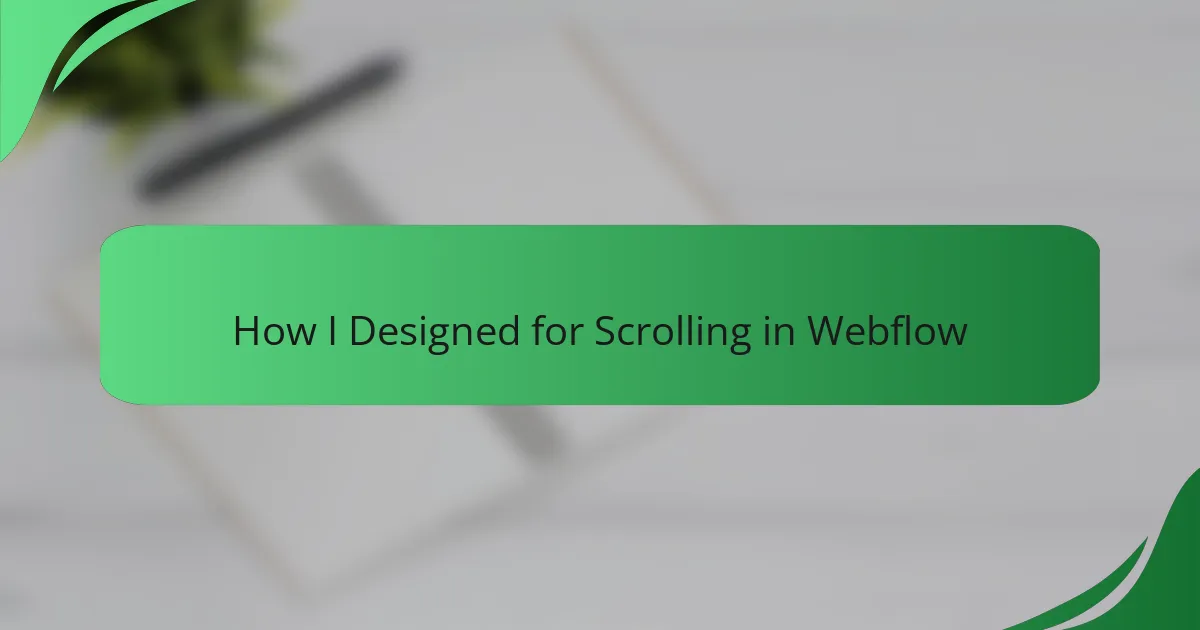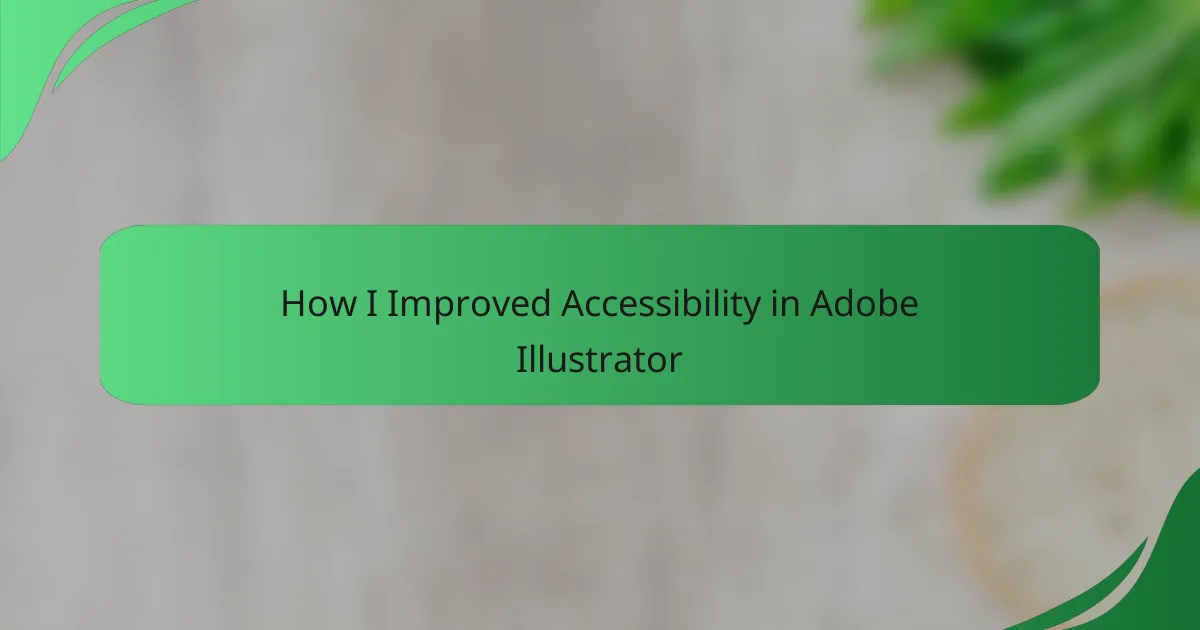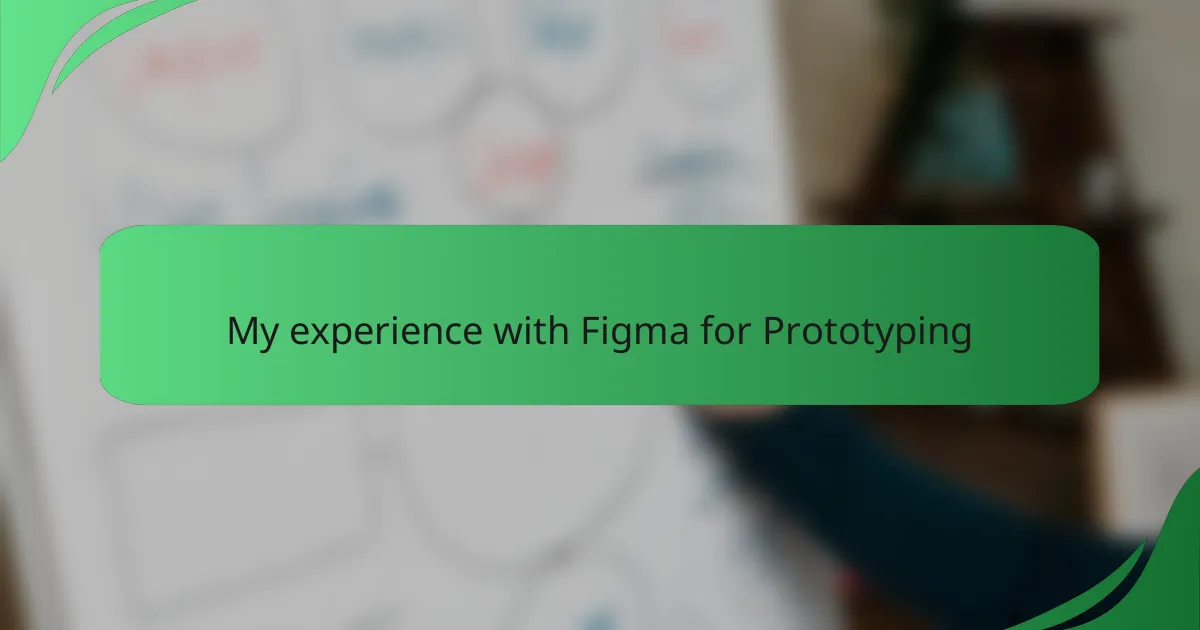Key takeaways
- Effective interface interaction design enhances user experiences by focusing on engagement, feedback, accessibility, and consistency.
- Understanding different scrolling types and implementing smooth transitions can significantly improve user retention and interaction.
- Testing designs across devices and providing clear visual cues are essential for successful and consistent scrolling implementation.
- Incorporating storytelling through scrolling can enhance user engagement and create a more immersive experience.
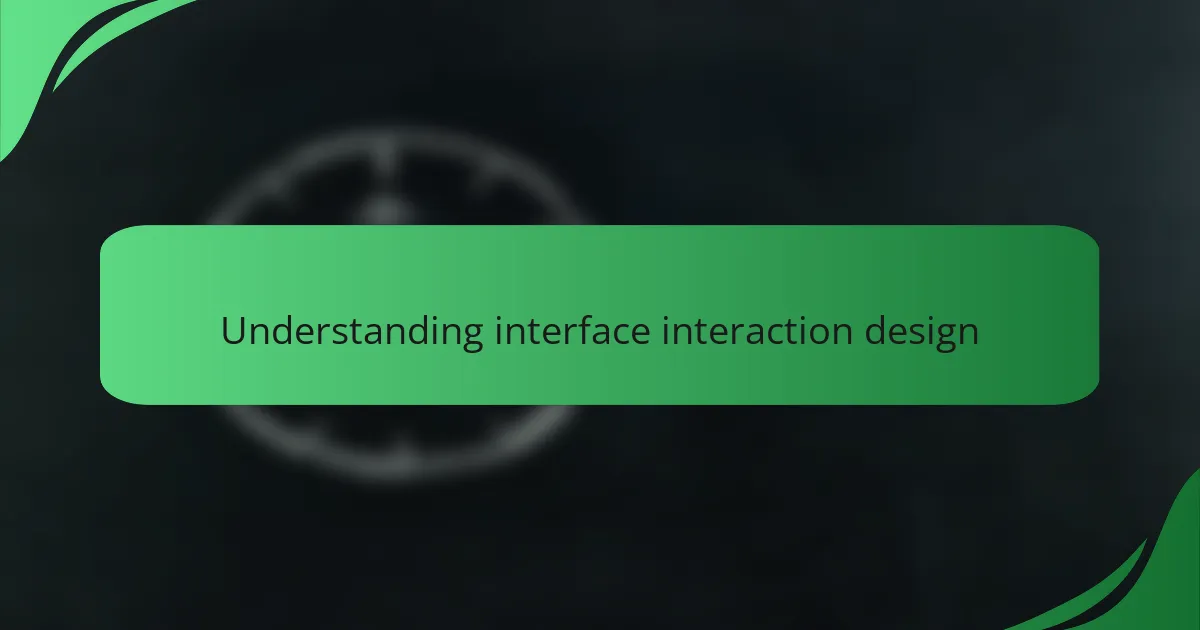
Understanding interface interaction design
Understanding interface interaction design is a fundamental aspect of creating seamless and engaging user experiences. From my perspective, it’s about recognizing how users navigate and interact with web elements. Each interaction tells a story, revealing what users want and need as they journey through a website.
I’ve had the pleasure of designing interfaces where even minor tweaks in interaction can significantly enhance user satisfaction. For example, implementing subtle animations can provide feedback that users crave, making them feel more connected to the interface. I’ve seen firsthand how thoughtful design fosters a sense of trust and encourages users to explore further.
Now, let’s break down some key components of interface interaction design:
| Aspect | Description |
|---|---|
| User Engagement | How interactions keep users interested and involved. |
| Feedback Mechanisms | Providing responses to user actions, enhancing user understanding. |
| Accessibility | Designing interactions that are usable for everyone, including those with disabilities. |
| Consistency | Ensuring similar interactions yield predictable results across the interface. |
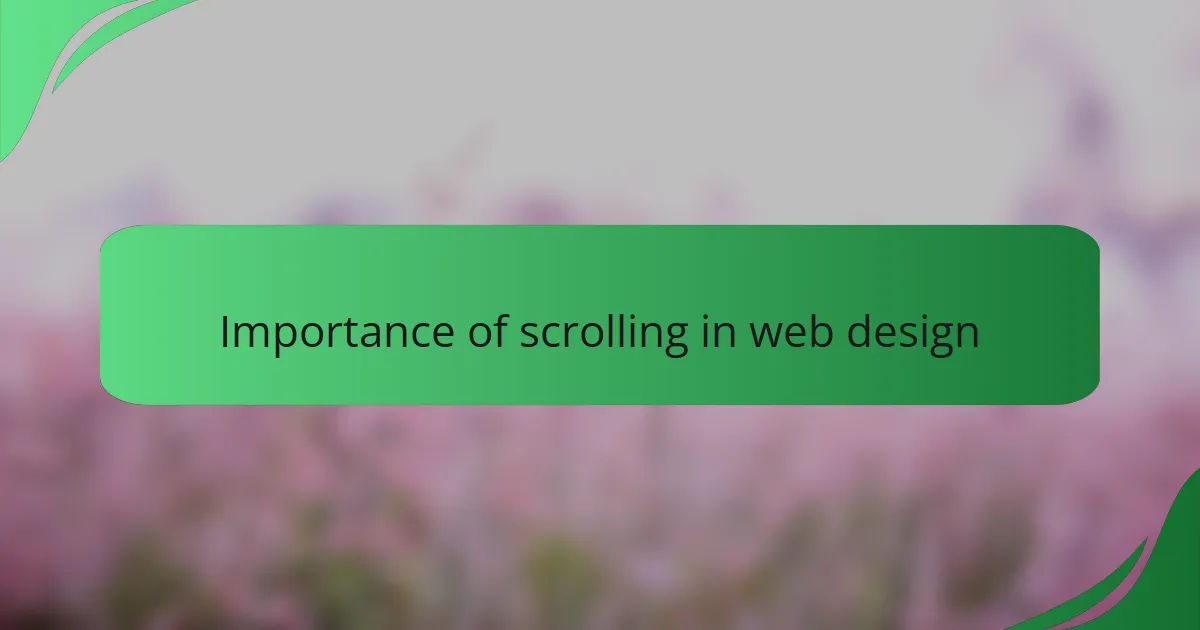
Importance of scrolling in web design
Scrolling is crucial in web design because it enhances user engagement and provides a smooth experience as people navigate through content. Personally, I’ve observed how well-designed scrolling can create a sense of discovery, where users feel compelled to explore more. When I implemented scrolling features in my projects, I noticed an increase in user retention—people simply loved scrolling through visually appealing and well-structured layouts.
Moreover, it’s vital to consider how different types of scrolling can affect interaction. For instance, parallax scrolling can add depth and creativity to websites, while infinite scrolling can keep viewers hooked on content without interruption. From my experience, understanding the nuances of scrolling helps designers create more intuitive interactions that resonate with users.
| Scrolling Type | Benefits |
|---|---|
| Standard Scrolling | Easy navigation, predictable user experience |
| Infinite Scrolling | Keeps users engaged, encourages content exploration |
| Parallax Scrolling | Adds visual depth, enhances storytelling through layered content |
| Vertical vs. Horizontal Scrolling | Vertical is more common; horizontal can be used creatively to create unique layouts |

Key principles of effective scrolling
When it comes to effective scrolling, one of the key principles I’ve learned is the importance of smooth transitions. I believe that if users feel like they’re gliding fluidly across content, their experience becomes more immersive. In a recent project, I added easing effects, which I observed made users linger longer on pages without even realizing it. Have you ever noticed how a little bit of animation can transform the scrolling experience? It’s fascinating to see how such subtle enhancements can lead to greater engagement.
Another principle that stands out is the power of visual hierarchy. I often prioritize content that deserves attention, using size, color, and spacing to guide users’ eyes naturally as they scroll. This approach allows users to feel more in control, as they navigate through information without feeling overwhelmed. There’s something reassuring about knowing where to focus first, isn’t there? It’s like a friendly guide leading the way through the digital landscape.
Lastly, accessibility should never be an afterthought. I remember working on a project where we implemented keyboard and screen reader navigation alongside scrolling features. It opened my eyes to how essential it is for everyone to have equal access to content. I can’t stress enough how rewarding it is to create experiences that resonate with all users. Have you experienced the impact of including accessible design in your scrolling strategies? It’s a true game-changer.

Tools and features in Webflow
When diving into Webflow, I quickly realized that its robust tools and features can truly elevate the design process. One tool that stands out for me is the interactions panel, which allows you to create engaging animations and transitions without needing to write a single line of code. I remember the thrill I felt the first time I saw my design come to life as I added subtle hover effects that not only looked great but also enhanced user experience.
Another feature that I found invaluable is the responsive design controls. They allow you to tailor your site for different devices seamlessly. I still recall the first project I completed using these controls; I was amazed at how easily I could switch between breakpoints and adjust layouts, which made my designs feel consistent and polished.
Here are some key tools and features in Webflow:
– Interactions and Animations: Create custom animations without coding.
– Responsive Design: Adjust your layout for various screen sizes effortlessly.
– CMS Functionality: Easily manage content with a built-in content management system.
– Styling Tools: Use a visual editor to customize typography and colors.
– E-commerce Integrations: Build and manage online stores with ease.
– Custom Domains and Hosting: Host your site directly and connect custom domains.
– Collaboration Features: Work with team members in real-time, getting feedback instantly.
These features not only streamline the design process but also inspire creativity, helping me realize that I could craft intuitive and engaging experiences that resonate with users.
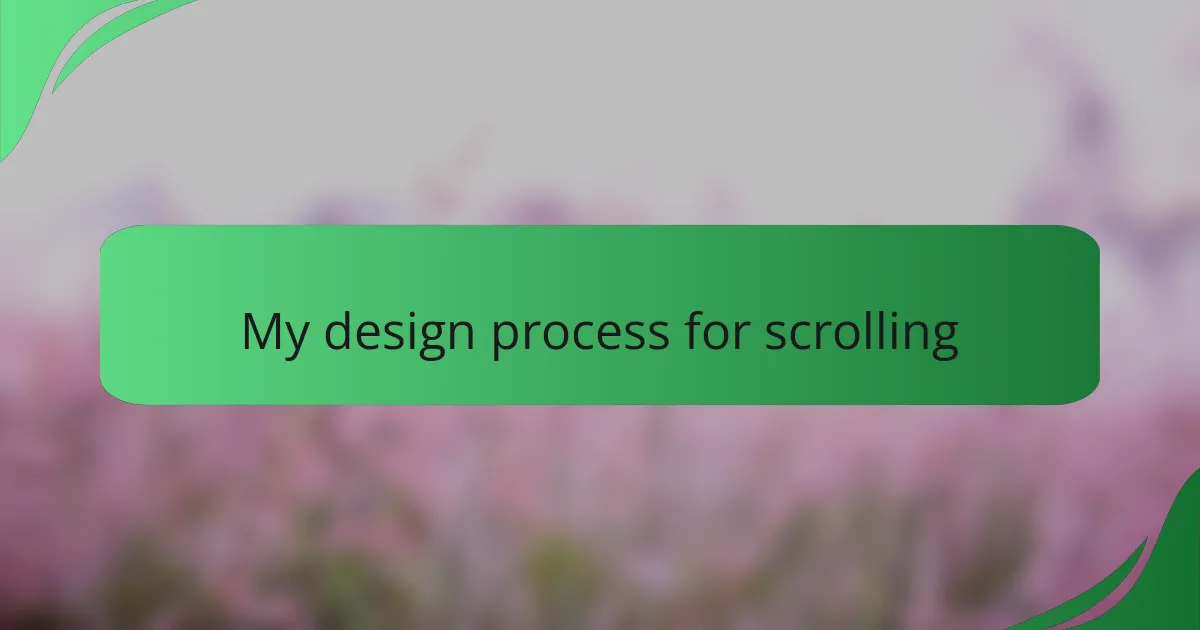
My design process for scrolling
My design process for scrolling involved several key steps that were essential to creating a seamless user experience. I started by understanding the target audience’s needs and expectations for interaction. Using Webflow, I experimented with different scrolling effects, ensuring they were not only visually appealing but also functional.
Throughout the process, I discovered that it’s important to maintain a balance between creativity and usability. For example, when implementing parallax scrolling, I noticed that it could enhance engagement, but too much movement could overwhelm users. I had to refine my designs based on feedback, which sometimes felt daunting yet rewarding when I saw them come to life.
In creating my scrolling design, I relied heavily on testing and iterating. Each phase taught me something new—like how crucial it is to pay attention to loading times and performance while ensuring a fluid experience for the user.
| Design Element | My Approach |
|---|---|
| Research Phase | User interviews and competitor analysis |
| Prototyping | Wireframes and early sketches in Webflow |
| Testing | User testing and feedback loops |
| Refinement | Iterating based on insights and performance metrics |
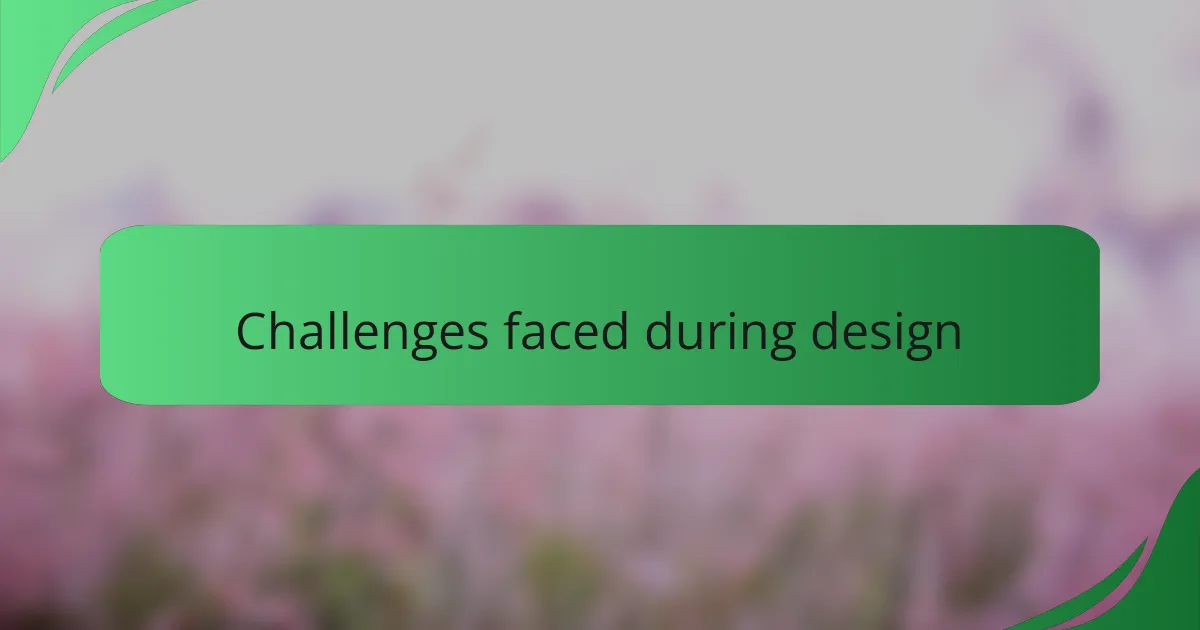
Challenges faced during design
Designing for scrolling in Webflow comes with its own set of challenges. One of the primary issues I encountered was ensuring consistency across different screen sizes. I had to be meticulous about testing designs on various devices to avoid any unpleasant surprises for users.
Another challenge was optimizing load times. As I incorporated more interactive elements, I felt the pressure to balance engagement with performance. There were moments of frustration when certain animations lagged, affecting the overall user experience. My determination to create a smooth scrolling experience drove me to look for creative solutions.
At times, I also struggled with how to effectively guide users through the content. I wanted to create a journey that felt natural and intuitive. I found myself experimenting with different layouts and scroll-triggered animations to keep the audience engaged without overwhelming them.
| Challenge | Solution |
|---|---|
| Inconsistent performance on devices | Thorough cross-device testing |
| Slow load times | Optimize animations and elements |
| User navigation issues | Incorporate scroll-triggered guides |
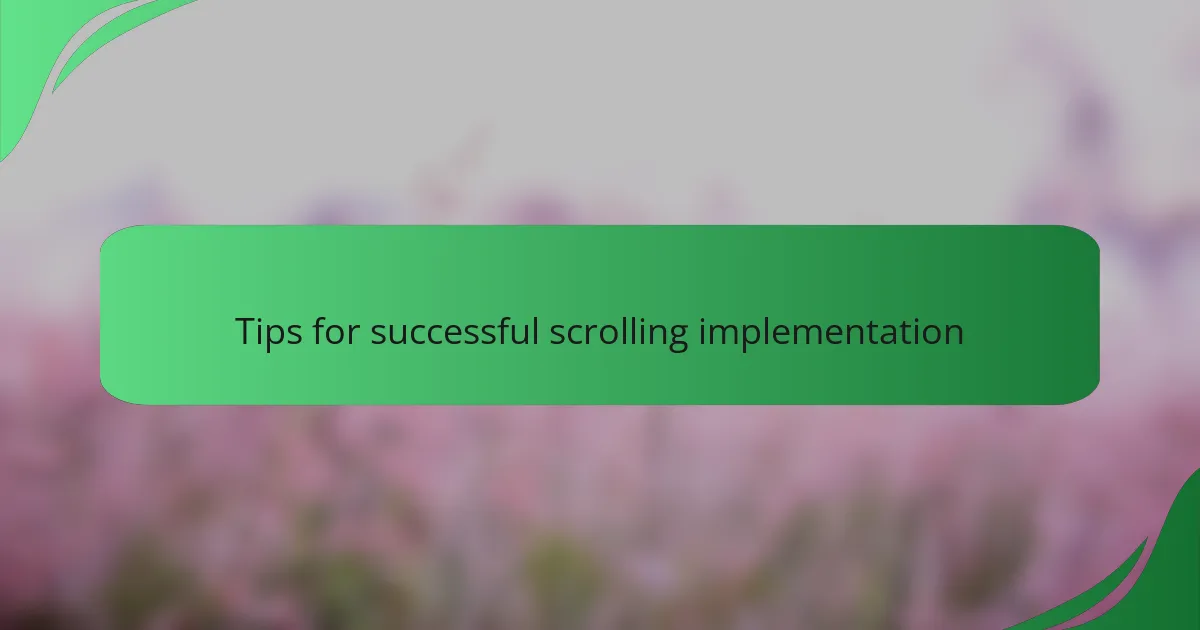
Tips for successful scrolling implementation
When implementing scrolling features, one crucial tip is to test your designs thoroughly across different devices and screen sizes. I vividly remember a project where a beautiful parallax effect looked stunning on my desktop but fell flat on mobile. It’s a reminder that what works in one context may not translate well to another. Have you ever experienced a disconnect like that? It’s essential to ensure your design shines everywhere, not just on your favorite screen.
Another aspect that has served me well is the importance of providing clear visual cues for users. In my experience, using subtle scroll indicators can significantly enhance navigation. For instance, I once added arrows at the bottom of a page that encouraged users to scroll down. The result? Increased engagement and lower bounce rates. Visual cues can act like a friendly nudge, guiding users as they explore content. It’s fascinating how small design elements can lead to such profound impacts.
Lastly, don’t overlook the power of storytelling through scrolling. I’ve found that thoughtfully designed scroll-triggered animations can create a narrative flow that captures users’ attention. One project involved revealing content bit by bit as users scroll down, creating curiosity and encouraging them to delve deeper. Think about your favorite websites—do they tell a story while you scroll? That’s what keeps users coming back.
